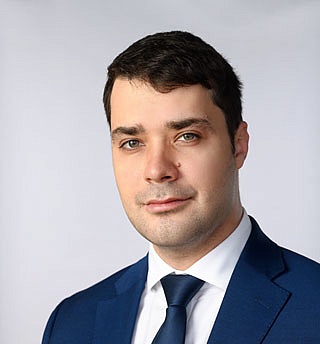Brand creation and protection: out with the old
6 April 2020
This article first appeared in World Trademark Review, published by Globe Business Media Group – IP Division. To view the issue in full, please go to www.WorldTrademarkReview.com
In this article you can read expressions of Alexey Kratiuk and Ilya Goryachev. The discussion can be found in the full version.
Trademark experts from across the globe offer critical insight into brand creation best practice and guidance on pitfalls to avoid
As technology and markets evolve, longstanding brand creation practices and processes quickly find themselves no longer fit for purpose. Developing a brand, in partnership with the right stakeholders, and putting in place proper protection are crucial to a business’ success. Yet it is often difficult for time and resource-poor rights holders to step back and assess their approach. In this exclusive roundtable a panel of experts – Clara Pombo, Marta Tolón and Stefan Edhammer from ClarkeModet (Spain), Gorodissky’s Ilya Goryachev and Alexey Kratiuk (Russia), and Hank Spuhler of McAndrews, Held & Malloy (United States) – outline the arguments that counsel can make for more resources and internal cooperation, consider the critical toolkits and checklists that should be developed to launch and protect a brand, explore how the relationship with external advisers and service providers can be maximised, identify the latest options for registering rights and highlight ways to maximise enforcement and protection spend.
From a legal perspective, what aspects of a brand should be considered to ensure 360-degree protection?
Alexey Kratiuk (AK): For me, legal aspects involve four main issues:
- ensuring that your brand is duly protected (eg, by trademark registration);
- ensuring that your protected brand reflects the true commercial intentions that will subsequently allow effective contractual monetisation if necessary;
- ensuring that your brand does not infringe third-party rights; and
- monitoring infringement and employing effective enforcement techniques.
Another aspect that should be considered alongside these is how the brands are used on the Russian market. Use is obligatory in Russia and non-use or misuse of the brand may entail its early termination. In Russia, a trademark registration becomes vulnerable to cancellation for non-use three years after the registration date; in addition, use of the mark in a form that is essentially different from that which is registered may not be sufficient to comply with the use requirements. That being said, it is advisable to protect the mark (through trademark registration) in the same basic form as that which is intended to be used in Russia or at least to ensure that any differences between the two forms are immaterial and do not affect distinctive features of the mark.
What is the one key thing that practitioners need to know about registering rights in your jurisdiction?
AK: Russia is a first-to-file jurisdiction. In this regard, it is of the utmost importance to ensure the timely filing of trademark applications covering the relevant brands. Prior use rights are not formally recognised by the trademark system. Normally it takes between eight and 10 months to get a trademark registered in Russia if the prosecution is reasonably straightforward. Examination comprises formal and substantive stages, with the relative background searches forming part of the process. Examination can be conducted on an expedited basis upon the applicant’s request. Pre-filing searches are highly recommended to check the availability of a brand.
How can counsel best argue for early engagement and position themselves as creative partners, rather than roadblocks to creativity – to ensure that protection levels align with the business’ plan for a brand and that they are involved with marketing and product development teams?
Ilya Goryachev (IG): One argument is that early engagement of legal counsel may help to shape the brand strategy from the initial stages – without incurring additional expenses for changing what could have been tailored to the legal regime at the outset. Moreover, brand protection strategy is one of the key elements of any business plan and such a strategy should take note of all the legal aspects surrounding the development and identity of the brand, which in turn requires the involvement of legal counsel from the beginning.
How important is a crossenterprise internal trademark usage manual and what key elements should it include?
IG: A cross-enterprise internal trademark usage manual is, I feel, important to the extent that it can ensure consistency with regard to trademark use. In particular, if the trademark is used with elements that may influence its distinctive character, then such use may not qualify as effective trademark use, which would be necessary to defend the mark from a non-use action. Therefore, the role of the manual could be to ensure that the trademark is used in the way in which it was registered. Further, the practice of using the manual may unearth the necessity of obtaining new trademark rights to build up the series of trademarks that shape the brand portfolio. A manual featuring acceptable manners of use for the brand could also be helpful in stopping the brand from becoming generic, with the distinctive features being diluted.
With protection in place, attention can turn to enforcement and commercialisation. For the latter, licensing can be a powerful commercial activity. When entering into partnerships, what are the key legal considerations for trademark counsel?
IG: Legal certainty with regard to the type of licence (exclusive or non-exclusive), selection of licensed goods, determination of whether a licensee will have the right to sub-license, the territory of the licence and other key conditions are crucial. Some local legislative rules must be considered as well. For instance, in Russia, in case of an exclusive licence agreement, a licensor cannot use the licensed intellectual property in the licensed territory within the term of the licence, unless this is permitted in the contract. Therefore, if the licensor wants to continue using the intellectual property, the exclusive licence contract must have specific provisions allowing it to use the licensed intellectual property. Another local specific is the recordation of licences at the Russia Patent and Trademark Office. The recordation procedure is not complex and short-form notifications may be used to simplify the paperwork. Unless recorded, the licence rights will be considered as not having been provided to a third party.
Another commercialisation strategy is to co-brand products in association with a third party. What are the main commercial and contractual considerations when entering into such relationships?
IG: Co-branding is often accompanied by mutually born expenses of a monetary and organisational nature. In this regard, it is vital to clearly set out the rights and obligations of both parties and to define the areas of responsibility (eg, who will be responsible for ensuring compliance of the co-branded materials and to what extent).
Success inevitably creates headaches in the form of infringement. What are the keys aspects to consider when building a (physical world) policing programme?
IG: Ranking infringers by the seriousness of the damage that they cause may be one aspect. Some infringements can be easily stopped by sending a cease and desist letter – although the wording of this may vary. While standard worded letters are helpful in some circumstances, it may be more effective to use sophisticated situationtailored letters in others. In some cases (eg, online infringements), contacting hosting providers can be helpful as well. If case settlement options have been exhausted, then it is time to consider litigation or to approach enforcement authorities. Further, a statutory limitation term must be observed from an enforcement perspective. In Russia, this is three years, starting from the date when the plaintiff learnt about the infringement and the infringer. Failure to meet that three-year term may result in the lawsuit being dismissed.
Social media is equally important; yet there are many pitfalls in this environment. What strategies should be put in place to monitor brand-related activity and discussion – both by internal employees and in the wider community?
IG: It is important to define what types of brand appearance on social media can be tolerated and what cannot. Reliable monitoring platforms (that also takes account of the Russian Cyrillic-based language) make it possible to reveal the specific areas on social media requiring attention and reaction. From online offers of counterfeits to issues of satire and parody with regard to the brand, each fact needs to be assessed from a legal position. Internal company policies, as well as training with regard to online aspects of brand use and positioning of the company online, may be helpful for avoiding potentially negative situations. In case of the wider community, this can include a timely reaction to branddamaging publications and the avoidance of aggressive tactics.
Of course, budgets are finite, so what is your top tip for saving money across registration and protection activities?
AK: One practical tip for saving money during the registration process is to check the availability of the brand by conducting clearance searches before commencing, so as to consider registering alternative or amended names if the search reveals any conflicting name. Another suggestion is to draft specifications of goods or services correctly to ensure protection for the goods or services of interest and try to avoid collisions with potential third-party rights at the same time. As for protection activities, the wide use of cease and desist letters and pre-trial actions (eg, communication with hosting providers) may prove effective in many infringement cases, thus providing fast solutions without expensive litigation procedures. Nevertheless, in some cases litigation may be the only way. In Russia, for instance, small and medium infringements can be dealt with via a simplified litigation procedure, where a judge considers the case ex parte subject to some procedural conditions. However, for large infringements that seriously damage the brand, the rights holder needs to consider more sophisticated enforcement approaches.
In terms of getting the most benefit from partners, how can rights holders maximise the advantages of the client-law firm relationship?
IG: Regular workflow allows law firm practitioners to better understand their clients’ needs and to adopt a flexible approach for ongoing matters. Further, while no one understands their business better than the client, practitioners can bring industry-specific legal expertise to the table. Law firm feedback can also help clients to develop better strategies with regard to the challenges posed by the market. Training seminars or similar events conducted by law firms for rights holders at which the parties can share their experiences and expertise from both business and legal perspectives can maximise the advantages of the client-law firm relationship.
Are there any other issues that you would like to raise?
IG: In terms of further brand use, the requirements of advertising law must be taken into account as well. For instance, if the trademark includes – as a nonprotected element – an indication such as “No 1”, use of the mark in advertising would require this superiority element to be justified.
To access this website, we request that you read and accept the Terms of Use.











